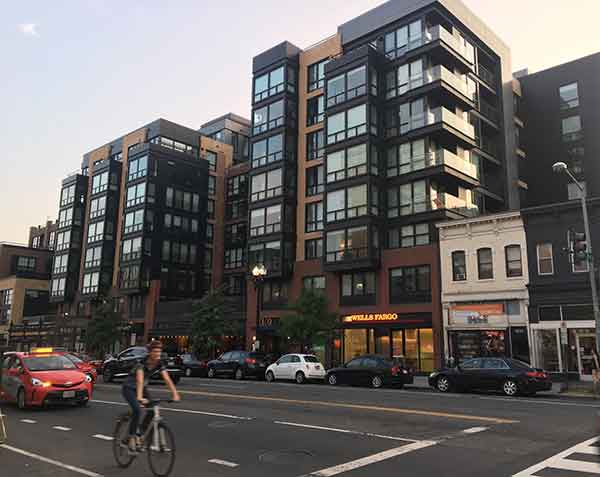
 |
|
New apartment buildings and businesses mushroom in on the 14th Street near U Street in this photo taken on Sunday. The traditional African American neighborhood has seen a sharp increase in the white population and skyrocketing property prices, a sign of gentrification in the Washington DC. Chen Weihua/China Daily |
In a recent meeting with a group of foreign journalists, Hyra talked about how African Americans in the neighborhood refused to walk their dogs in a new dog park. He said they resent the dog park because they had appealed for an upgrade to the area, but it wasn't turned into a dog park until whites moved in.
On the surface, the Shaw and 14th Street area looks increasingly like the most diversified area in Washington. But Hyra found micro-level segregation when people go to churches and bars. The interaction people expect from such a diverse neighborhood is not happening.
Indeed, a church on the adjacent 15th Street I visited last year had attendees who were 100 percent African American. And if you pass by a school in Washington, it's not hard to tell that schools in the city are still very much segregated despite the fact that racial segregation is illegal in the United States.
A Pew Center survey in 2014 shows that many US congregations are still racially segregated. And a report in February this year by the UCLA Civil Rights Project shows that schools in Washington remain intensely segregated.
According to the report, the overall share of African American and Latino students in Washington who attended such segregated public schools - those with 90 to 100 percent minority enrollment - decreased between 1992 and 2013, but remained very high.
Nearly 90 percent of black public school students went to "apartheid schools" - either completely nonwhite or within 1 percent of total segregation - in 1992, and the percentage was still as high as 71 percent in 2013.
I also noticed that the lines to some bars in Adams Morgan and Connecticut Avenue/18 Street areas are often almost all African American.
These are serious issues that people don't read much about in US mainstream media or watch in hearings on Capitol Hill, located a few blocks from those neighborhoods.
Contact the writer at chenweihua@chinadailyusa.com